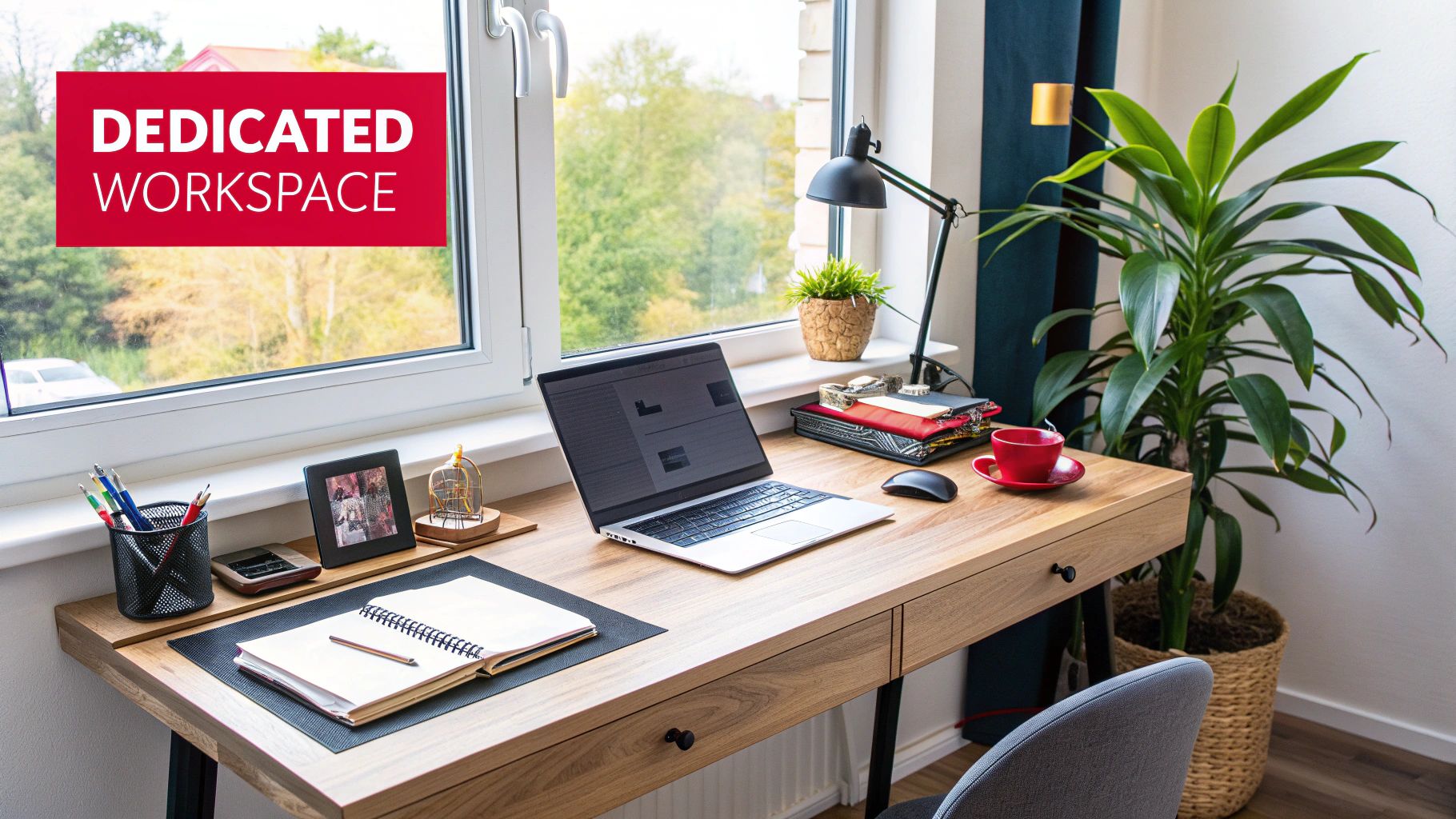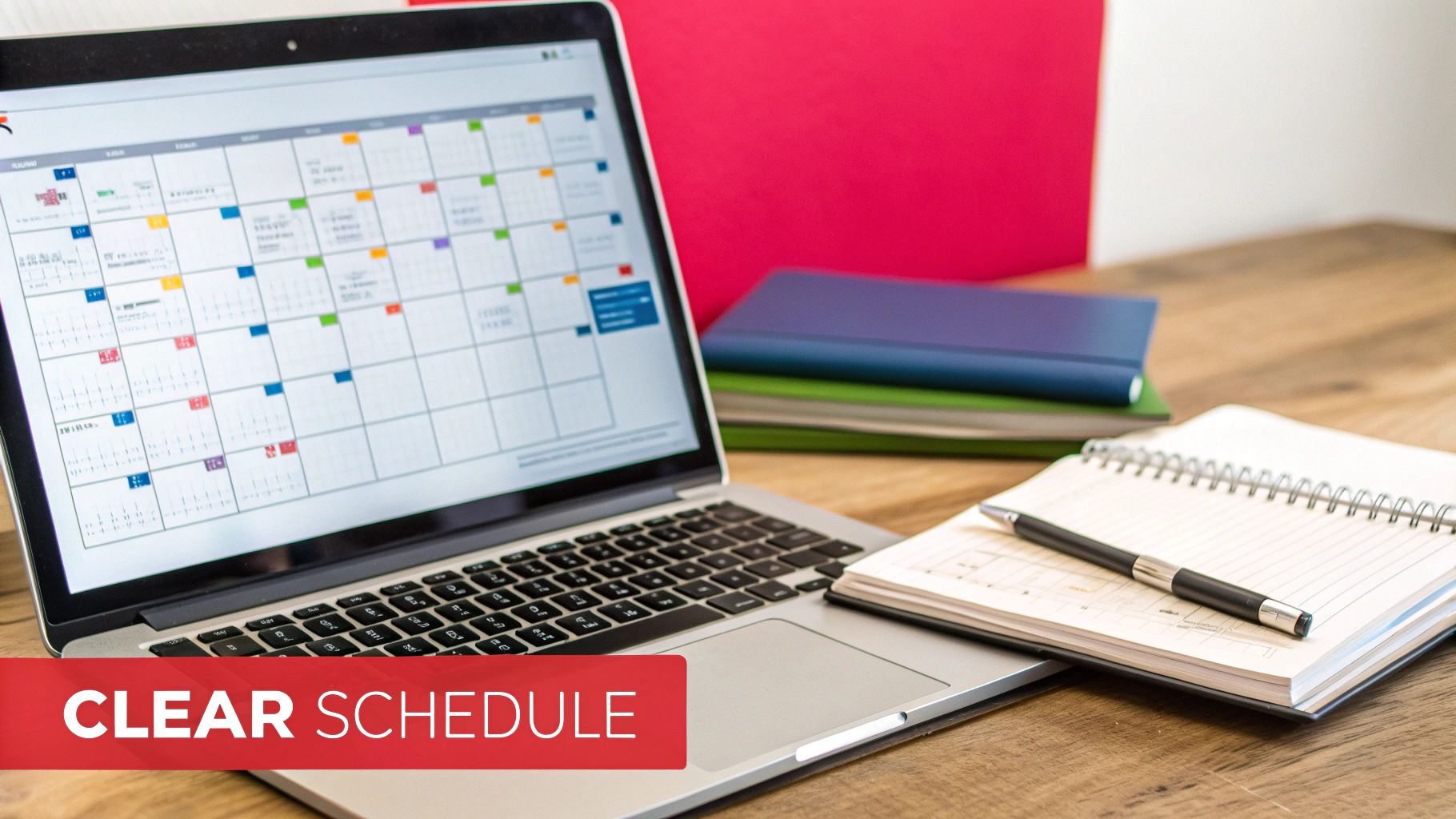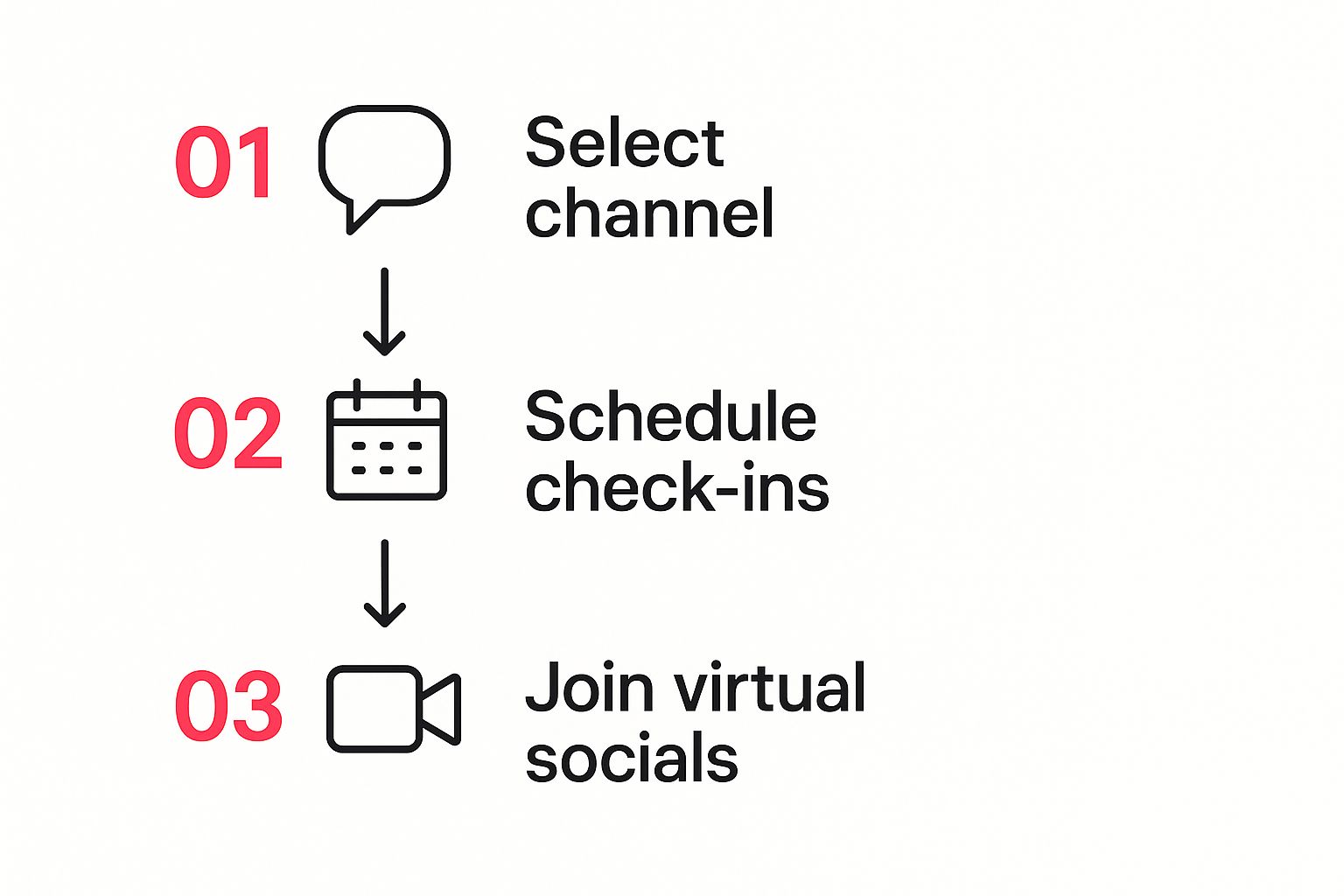How to Stay Motivated Working From Home: Top Tips
Max
The Reality of Remote Work Psychology

Working from home presents a unique set of psychological challenges. Unlike a traditional office, the lines between our professional and personal lives become blurred. This can make it difficult to fully engage in “work mode” and maintain consistent focus. The lack of physical separation from home life also introduces potential distractions that can impact productivity.
However, despite these hurdles, remote work offers substantial benefits for employee well-being. Studies show that 74% of employees report increased happiness while working remotely, often citing the absence of a commute and the increased flexibility. Interestingly, 50% would even accept a lower salary to preserve this work arrangement.
This data underscores the potential of remote work to be intrinsically motivating. By understanding and addressing the psychological factors involved, we can tap into this potential. For more insights into remote work statistics, check out this resource: Learn more about remote work statistics. This understanding is key to developing strategies for staying motivated while working from home.
The Impact of Blurred Boundaries
A primary psychological reality of remote work is the merging of work and personal life. When your home becomes your office, mentally disconnecting from work becomes a significant challenge, potentially leading to burnout. The temptation to check emails after hours or work on weekends can easily intrude on personal time and relaxation. This constant connection can negatively impact both mental well-being and long-term motivation.
Creating clear boundaries – both physical and time-based – is crucial to counteracting this effect. Establishing designated work hours and a dedicated workspace can help create a much-needed separation.
The Importance of Structure
Structure is paramount to succeeding in a remote work environment. Just as a physical office provides a dedicated workspace, remote workers need to establish a similar structure at home. This could involve setting specific work hours, creating a dedicated office space, and establishing routines to mark the start and end of the workday. For practical tips on establishing a productive remote work routine, see How to master remote work.
This structure creates a psychological separation between work and personal life, promoting better focus and increased productivity. For a more comprehensive understanding of effective remote work strategies, explore these proven strategies. By addressing these core psychological aspects, you can create a sustainable and motivating work-from-home experience.
Crafting a Workspace That Triggers Productivity

Your physical workspace significantly impacts your motivation when working from home. A well-designed space can boost productivity and creative thinking, while a disorganized setup can drain your energy. Therefore, a productive home office is key for staying motivated.
The Power of Dedicated Space
Just like a traditional office, a dedicated home workspace creates a mental divide between your professional and personal life. This separation is vital for focus and minimizing distractions common with remote work. Even a small, designated area can make a big difference. This space should be free from distractions like televisions and household chores, allowing for full concentration.
Ergonomics and Energy
Ergonomics play a key role in maintaining physical and mental energy. An uncomfortable chair or a poorly placed monitor can cause physical strain, impacting focus and motivation. Investing in an ergonomic setup—a comfortable chair, a monitor stand, and a good keyboard—can greatly improve your productivity. This investment can prevent long-term health issues and boost your overall well-being.
Light and Visual Cues
Natural light is a powerful motivator. A workspace near a window can elevate your mood and energy levels. Visual cues, like inspiring artwork or motivational quotes, can also offer a subtle boost. These create a positive and stimulating environment, influencing your motivation.
Creating Boundaries in Limited Spaces
Limited space can be challenging for remote workers, particularly in apartments or shared housing. However, even in small spaces, creating boundaries is achievable. A folding desk, for instance, can be put away after work, restoring the space to its personal use. This physical act reinforces the mental separation between work and personal time. The challenges of remote work can sometimes be similar to those faced by entrepreneurs, especially regarding mental health. Understanding the unique challenges that entrepreneurs experience can be helpful. For more information, check out this resource: Entrepreneur Mental Health.
Budget-Friendly Enhancements
Creating a motivating workspace doesn’t have to be expensive. Simple additions, like plants, a comfortable rug, or an essential oil diffuser, can create a more pleasant and productive atmosphere. Regularly decluttering and organizing your workspace can also significantly improve focus. These small adjustments can greatly impact your mindset and motivation, making your work-from-home experience more enjoyable.
Connection Rituals That Combat Remote Isolation

While a dedicated workspace and ergonomic setup are essential for productivity, they often overlook the social aspect of a traditional office. This lack of connection can breed isolation, a significant productivity drain for remote workers. Building connection rituals is key to maintaining motivation and well-being.
The Importance of Social Interaction
Humans thrive on social interaction. Even introverts need regular connection. In a traditional office, these interactions happen naturally. But in a remote setting, you have to be proactive.
Consider scheduling virtual coffee breaks with colleagues or participating in online team-building activities. Joining virtual coworking sessions can also provide a sense of community and combat isolation. These intentional interactions can significantly impact your overall well-being.
Building Structured Connection Points
Integrating social time doesn’t have to disrupt your workflow. Successful remote workers strategically build connection points into their daily routines. This could involve a virtual coffee break after finishing a big project or a digital coworking session during a less demanding time.
For example, block time for a virtual lunch with colleagues. Or dedicate 15 minutes each morning for a quick online chat with your team. This structured approach ensures social interaction becomes a regular, positive part of your workday. Interested in learning more about managing remote teams? Check out this helpful resource: How to master managing remote teams.
Nurturing Professional Relationships Remotely
Nurturing professional relationships is just as important remotely as it is in a traditional office. Regular communication, even short check-ins, strengthens these bonds.
Actively participating in virtual team meetings and online discussions keeps you connected and engaged. These interactions foster a sense of belonging and can even spark new collaborations. This shift towards remote work isn’t just personal preference. It reflects a larger change in how businesses operate. Approximately 28% of employees worldwide worked remotely in 2023, up from 20% in 2020. In the US, about 22.8% (35.1 million people) worked remotely at least part-time as of August 2024. This widespread adoption shows that companies recognize the benefits of remote work. For more detailed statistics, see here.
Building a Remote Support Network
Connecting with other remote workers offers invaluable support. They understand the unique challenges of working from home. Online communities and forums provide spaces to share experiences, seek advice, and build a strong support network. This network offers encouragement, practical tips, and a sense of camaraderie.
This shared understanding helps you navigate remote work challenges and stay motivated. Ultimately, it leads to a more fulfilling and productive work-from-home experience. Creating these connections transforms remote work from isolating to collaborative and engaging, boosting both productivity and well-being.
Digital Systems That Sustain Motivation
Working from home can be a challenge, especially when it comes to staying motivated. But just like a well-equipped gym empowers you to reach your fitness goals, the right digital tools can transform your remote work experience from draining to energizing. We’ve explored some effective solutions specifically designed for remote work motivation.
Task Management Systems: Track Your Progress
Task management systems with visual progress indicators are incredibly effective for maintaining motivation. They provide the satisfying feeling of accomplishment, often missing in remote work, similar to leveling up in a video game. Seeing a visual representation of your progress can significantly boost your engagement.
Trello: Trello lets you visualize projects as cards moving across a board, offering a clear overview of your workflow.
Asana: Asana offers a structured approach to managing tasks, assigning responsibilities, and tracking deadlines, promoting collaboration and keeping everyone aligned.
ClickUp: ClickUp is known for its customization. You can tailor workflows, track time, and manage projects of all sizes, making it a versatile choice.
Automation: Eliminate Energy Drains
Strategic automation is essential for sustained motivation. By automating repetitive tasks, you free up mental energy for more stimulating work. This allows you to prioritize high-impact projects instead of getting bogged down by smaller, less engaging ones.
Email Filters: Automatically sorting incoming emails reduces inbox clutter and streamlines communication.
Scheduled Social Media Posts: Planning and automating social media content saves time and ensures a consistent online presence.
Automated Invoicing: Automating billing reduces administrative work and guarantees timely payments.
Focus Applications: Create Distraction-Free Zones
Focus applications help you create distraction-free work periods. They block distracting websites and apps, allowing you to concentrate deeply, which is crucial when working from home where distractions abound. Think of them as your digital guard against interruptions.
Forest: Forest uses a gamified approach. You “grow” a virtual tree while focusing, making distraction avoidance fun and rewarding.
Freedom: Freedom blocks distracting websites and apps across all your devices, promoting consistent focus across your digital workspace.
Focus@Will: Focus@Will uses scientifically engineered music to improve concentration and productivity, creating a more immersive work environment.
Virtual Collaboration and Accountability
Connecting with colleagues and maintaining accountability is vital for staying motivated when working remotely.
 This infographic presents a simple three-step process for connection and accountability: choose a communication channel, schedule regular check-ins, and engage in virtual social activities. This fosters a sense of community and shared purpose, even while working remotely.
This infographic presents a simple three-step process for connection and accountability: choose a communication channel, schedule regular check-ins, and engage in virtual social activities. This fosters a sense of community and shared purpose, even while working remotely.
Personal Reward Systems That Actually Work
Creating a personal reward system is crucial for staying motivated while working from home. Generic advice often misses the mark, so tailoring your system to your individual needs is key. This means understanding what truly motivates you and designing incentives that boost your productivity, rather than turning into procrastination traps.
The Science of Rewards and Timeboxing
Effective reward systems often use timeboxing, a time management technique where you dedicate specific time blocks to tasks. Pairing this with strategic rewards can significantly improve your productivity. For instance, after a focused hour of work on a difficult project, reward yourself with a 15-minute break to enjoy a cup of tea or listen to your favorite music.
This approach uses the principles of operant conditioning, where positive reinforcement strengthens desired behaviors. By linking focused work with a pleasant reward, you build a positive feedback loop that encourages productivity. However, it’s essential to strike a balance between instant gratification and long-term motivation for achieving goals.
Designing Effective Incentives
Personalize your rewards to match your interests. If you love food, a special lunch after finishing a task might be highly motivating. If you enjoy learning, setting aside time for a new skill after a productive work session could be your reward.
Small, Frequent Rewards: These are perfect for maintaining momentum throughout the day. Think short breaks, healthy snacks, or quick stretches.
Larger Rewards: These work well for long-term goals or completing challenging projects. A weekend trip, a new gadget, or a special dinner out can be great motivators.
Avoiding Reward System Pitfalls
While rewards can be strong motivators, they can also be counterproductive if not used correctly. A common mistake is rewarding yourself before completing a task. This can lead to procrastination and a failure to follow through.
Another pitfall is choosing rewards that sabotage your productivity. For example, rewarding yourself with a long social media break after a short work period can disrupt your focus and make it hard to get back to work.
Structuring Incentives for Consistent Motivation
Successful remote professionals structure their rewards to stay consistently motivated. They often tie rewards to specific, measurable goals. This gives them a clear objective to work towards and a tangible reward upon completion.
Create a Reward Menu: List various rewards, both big and small, to choose from based on the task completed.
Track Your Progress: Visually tracking your achievements and earned rewards reinforces positive behavior and keeps you motivated.
Regularly Review and Adjust: Your motivations may change over time, so it’s important to regularly review and adjust your reward system as needed.
Building Your Customized System
Creating a personalized reward system requires understanding yourself. Think about your work habits, personality type, and what specifically motivates you. Try out different reward strategies to discover what truly works for you.
Intrinsic vs. Extrinsic Motivation: Identify what internally motivates you (enjoyment of the work itself) and what external rewards you find most appealing.
Work Style: Adjust your rewards to suit your work style. If you thrive on structure, scheduled breaks and rewards might be effective. If you prefer flexibility, more spontaneous rewards might work better.
By understanding the principles of behavioral psychology and personalizing your approach, you can create a reward system that truly improves your work-from-home motivation and productivity.
Movement Strategies for Sustained Energy
Working from home presents unique challenges to maintaining motivation. A comfortable workspace and the right digital tools are important, but they’re only part of the equation. Your physical state plays a huge role in your mental energy and focus. This means incorporating strategic movement into your day is vital for staying motivated and productive.
Micro-Movement Breaks: Preventing Energy Crashes
Just like taking short breaks to connect with others can improve your mood, incorporating micro-movement breaks can help prevent those dreaded afternoon energy slumps and actually improve your cognitive performance. These short bursts of activity, even just 1-2 minutes each hour, can make a real difference.
Stretching: Simple stretches at your desk can ease muscle tension and improve circulation.
Walking: A quick walk around your home or up and down the stairs can re-energize you.
Jumping Jacks: Even a handful of jumping jacks can elevate your heart rate and provide a quick energy boost.
These small movements help you stay refreshed and focused all day long. They also combat the negative effects of prolonged sitting, a common issue for people working from home.
Designing Your Environment for Movement
Think about how you can set up your home environment to encourage more movement. Maybe you could put your printer in a different room, so you have to get up every time you need to print. Keeping your water bottle in a separate location encourages you to refill it more often, which keeps you hydrated and moving. These small environmental tweaks can have a surprisingly significant impact on your overall activity level throughout the workday.
Desk Exercises for a Motivation Boost
Even if you can’t leave your desk, you can still incorporate desk exercises to fight the motivation-draining effects of staying still for too long.
Chair Squats: These strengthen your legs and core without you having to stand up.
Desk Push-Ups: You can perform push-ups against your desk to build upper body strength.
Seated Twists: Gentle twists while sitting can improve flexibility and reduce back pain.
These simple exercises can be done quickly and discreetly, helping you maintain energy and focus without disrupting your workflow.
Fueling Your Body for Remote Work
Nutrition and hydration are crucial for consistent energy. When you’re working from home, meal timing becomes even more important. Eating smaller, more frequent meals can help prevent energy dips and crashes. Staying properly hydrated is also essential for maintaining cognitive function and overall well-being. Avoid sugary drinks and processed foods, as they can lead to energy fluctuations. Focus instead on whole foods, lean protein, and plenty of fruits and vegetables to keep your body and mind fueled for the entire workday. Consider integrating these movement and nutrition strategies to effectively maintain your motivation while working remotely.
Building a Sustainable Remote Work Career
Maintaining motivation while working from home isn’t just about daily to-do lists. It’s about building a sustainable career for the long run. This means establishing practices that support your professional growth and well-being outside of a traditional office setting.
Proactive Burnout Prevention: Recognizing the Signs
One of the biggest challenges of a remote career is burnout. The always-available nature of remote work can blur the lines between your job and personal life, leading to exhaustion. Recognizing early warning signs, such as changes in sleep patterns, increased irritability, or a decline in work quality, is essential.
For example, consistently working late or constantly checking emails can signal an unhealthy work-life balance. Proactive burnout prevention is key. Start by setting clear boundaries, such as designated work hours and a dedicated workspace. Prioritizing self-care, including regular exercise and hobbies, also helps maintain your mental and physical health.
Refreshing Your Remote Setup: Avoiding Plateaus
Just like reorganizing your desk in a physical office, periodically refreshing your remote work setup can reignite motivation and prevent plateaus. This might involve rearranging your workspace, investing in new equipment like a standing desk, or exploring different productivity apps.
Think about how often you update your tech tools. Are you using the most efficient apps for communication and task management? Regularly evaluating and updating your digital toolkit, including software like Slack for communication, is essential for optimal productivity. Even small changes, like incorporating more natural light into your workspace, can significantly impact your energy and focus. These adjustments ensure your remote environment remains stimulating and supports your long-term career goals.
Maintaining Visibility While Working From Home
Working from home shouldn’t mean being invisible. Successful remote workers actively maintain their visibility within their teams to ensure their contributions are recognized. This involves proactive communication, regular check-ins with managers, and actively participating in virtual team meetings.
This goes beyond simply completing tasks. It’s about effectively communicating your progress and accomplishments. Actively engaging in team discussions and contributing innovative ideas reinforces your value to the company. Using project management tools like Asana to share regular updates or taking the initiative to lead team projects can boost your visibility and demonstrate your leadership skills.
Advocating for Yourself and Building Connections
Without the casual interactions of a physical office, remote workers must be more intentional about building professional connections. Actively networking online, attending virtual industry events, and scheduling virtual coffee chats with colleagues helps expand your network.
Advocating for your needs as a remote employee is also crucial. Clearly communicate your expectations, seek professional development opportunities, and negotiate for resources that support your success. Requesting access to online training platforms or proposing flexible work arrangements shows your commitment to your growth and work-life integration. These strategies are vital for building a solid remote career foundation.
Setting Purposeful Goals for Long-Term Motivation
To maintain long-term motivation, establish purposeful professional goals aligned with your overall career aspirations. This provides direction and helps you stay focused amidst the distractions of working from home.
These goals can include short-term objectives, like learning a new skill, and long-term aspirations, like moving into a leadership position. Regularly revisiting and adjusting these goals keeps you engaged with your remote career path. This long-term perspective shifts your remote work experience from a temporary setup to a fulfilling and sustainable career journey.
Find your perfect remote job today and start building a sustainable and rewarding remote career. Visit Remote First Jobs to explore thousands of remote opportunities.


